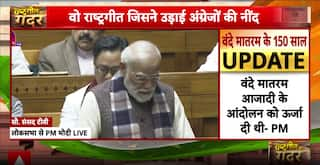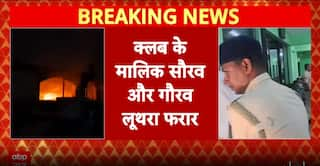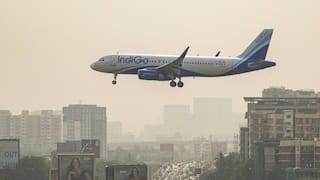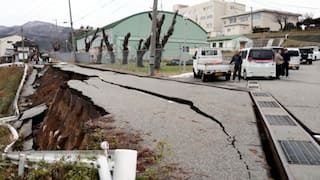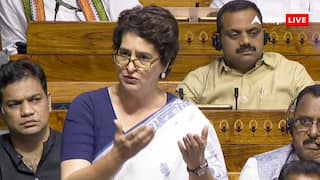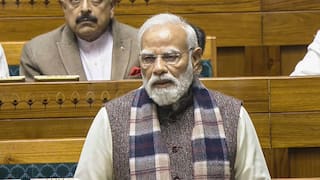Explorer
Climate Change: A Catastrophic Future for India?
To the extent that there is any discussion of climate change in India, it is most commonly viewed, rather erroneously, as being synonymous with “global warming” and that, in turn, has been reduced to the question of pollution.

Seven of the world’s 10 most polluted cities are in India. (Representational Image/ Getty)
In India’s recently concluded elections, there was much that divided the BJP from an array of political parties constituted as the opposition, among them the Congress, the CPM, and the parties that forged the so-called mahagathbandhan. But there was also much that was common to all the parties, nothing more so than the fact that climate change was almost entirely obscured as an issue deserving of the voter’s attention. What does it mean for the country that not one political party has shown any real sensitivity to the question of climate change and any awareness of the catastrophic certainty that it will seriously erode any possibility of “normal life” for hundreds of millions of Indians unless the country changes course?
To the extent that there is any discussion of climate change in India, it is most commonly viewed, rather erroneously, as being synonymous with “global warming” and that, in turn, has been reduced to the question of pollution. It is unquestionably true, of course, that air pollution has altogether altered the landscapes—physical, social, economic, emotional—of everyday life in India. The highly respected British medical journal, the Lancet, in a study published in December 2018 noted that 1.24 million deaths, accounting for 12.5% of all deaths in India, could be attributed to air pollution in 2017. Delhi did not have a single day in 2018 when the air quality was recorded as “good”; alarmingly, it has the distinction of being the most polluted megalopolis and capital in the world, even if there are smaller cities, such as neighboring Gurgaon, that are still more polluted.
Seven of the world’s 10 most polluted cities are in India. Schools over most of north India have to be shut down every winter for at least a few days since the air poses a peril to children. While the poor are disproportionately affected, and constitute the bulk of those who become “climate refugees”, elite South Delhi neighborhoods cannot escape altogether the dire consequences of hazardous levels of air pollution. In a country where little these days is democratic, air pollution at least promises to be unsparing of the rich and the poor alike.
However, climate change signifies something even more ominous than global warming, which is a reference to the earth’s rising surface temperature on account of the greenhouse effect caused by increased levels of carbon dioxide, chlorofluorocarbons, and other gases and pollutants. In consequence of this warming, glaciers are melting, sea levels are rising, and the habitats of most wildlife are being decimated. Though the process whereby nature has been altered by the impress of human activity has been going on for thousands of years, the Industrial Revolution precipitated a massive increase, by several orders of magnitude, in global warming; over the course of the last five decades, especially, the hand of man has “achieved”, if that is the word, in the span of one human lifetime what would have normally have been done over hundreds of thousands of years in geologic time.
To live in the anthropocene age, then, means that we have to for the first time contend with the fact that human history intersects with geological history in unprecedented ways. The complex planetary weather and climate systems have been altered by the hand of man. Some parts of the earth are cooling, if in the short run, even as most others are warming; extreme weather events are becoming more common worldwide. Himalayan glaciers have been melting at record pace, and the Hindu Kush Himalaya Assessment, jointly authored by scientists from Nepal, India, China, Tibet, and Bangladesh, suggests that most of these glaciers will have disappeared by 2100, and in the Central and Eastern Himalayas by as early as 2035. The loss of forest cover in India over the last 17 years is about four times the size of Goa: the carbon locked up in the tissues of trees that are felled is released into the air and further contributes to the greenhouse effect. The entire phenomenon of climate refugees, often displaced when their farms and livelihood have been destroyed by an environmental disaster, and climate migrants to India, fleeing rising sea levels in Bangladesh and increasing salt-water intrusions in the Sundarbans, has barely registered in public discourse. “By 2020,” the World Bank notes, “the pressure on India’s water, air, soil and forests is expected to become the highest in the world.”
The metropolitan centers in India have had something of a public discourse around pollution—caused largely by industrial emissions, household emissions, and vehicular traffic—since environmental activists such as Anil Aggarwal brought this matter to the fore in the 1980s. Every winter there is something of a hue and cry over the unbearable levels of pollution, especially if schools are closed for a few days, but the country as a whole appears to be both singularly ill- informed about, and indifferent to, the entire question of climate change. Academic work in India, barring a voice here and there, has continued apace as though speaking of climate change was a luxury in a country where issues of grinding poverty, resurgent nationalism, xenophobia, conflicts over caste, staggering unemployment, and violence against women stare one in the face. The poor, of course, are more likely to be pushed into the ranks of climate migrants and refugees; they will be disproportionately affected by rising sea levels, climate-induced droughts, or rising temperatures.
The poor are also far more likely to be susceptible to respiratory problems or succumb to heat waves. These are doubtless some of the reasons why the question of climate change remains to the elites and the country’s middle class something of an abstraction, though if they think that way they have yet to awaken to the fact that the devastations wrought of climate change will spare no one.
As the recent elections demonstrated, political parties in India have shown little awareness of the critical importance of climate change. The political manifesto of the Congress party devotes several paragraphs to “environment and climate change”, but strikingly Congress politicians made absolutely no mention of climate change when they were canvassing for votes. People do not read manifestos, as the BJP surely surmised. Not surprisingly, the BJP performance in this matter is, if anything, more pathetic. The BJP manifesto speaks of increasing India’s “renewable energy” capacity, and how climate change and terrorism are issues which the country seeks to address. Just how climate change is to be addressed is altogether ignored. Some politicians may think that installation of solar panels is enough to address the question of climate change, but that is only a reflection of how singularly ill-informed they are of the gravity of the problem. If we in India do not start addressing the question of climate change at once, there will be little, if anything, left to discuss a few decades from now.
(Vinay Lal is a writer, blogger, cultural critic, and Professor of History at UCLA)
Disclaimer: The opinions, beliefs and views expressed by the various authors and forum participants on this website are personal and do not reflect the opinions, beliefs and views of ABP News Network Pvt Ltd.
Follow Blog News on ABP Live for more latest stories and trending topics. Watch breaking news and top headlines online on ABP News LIVE TV
View More








